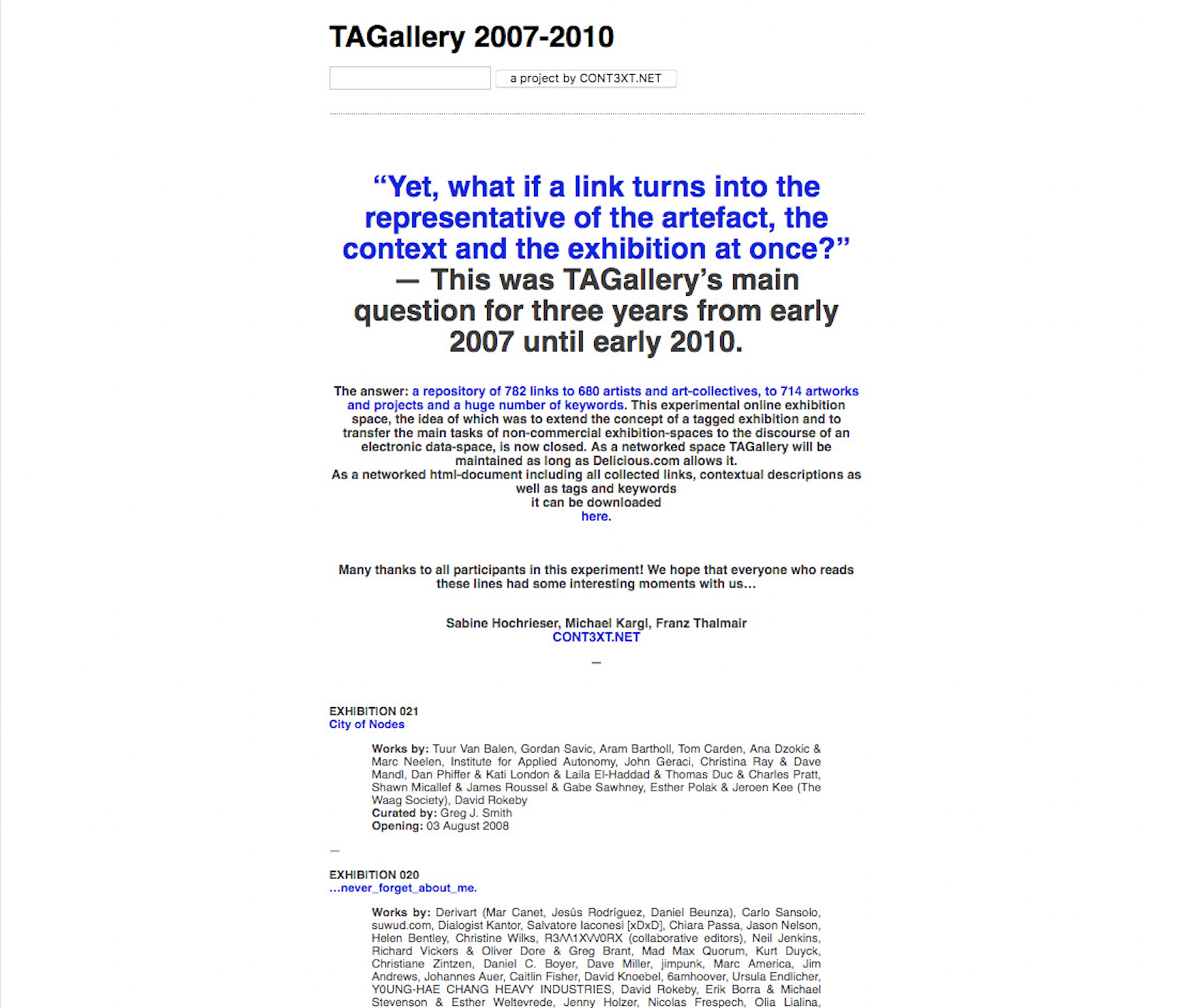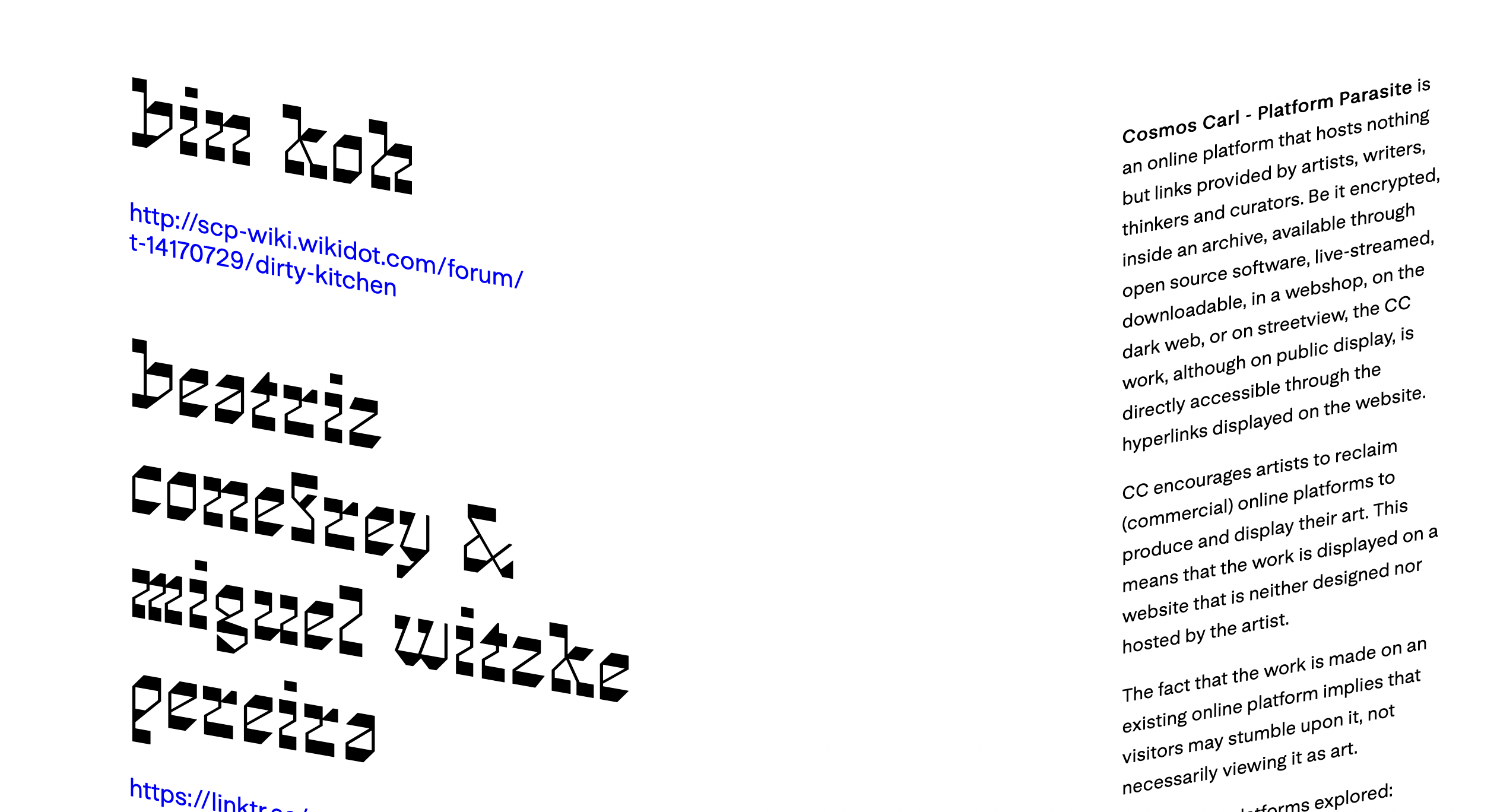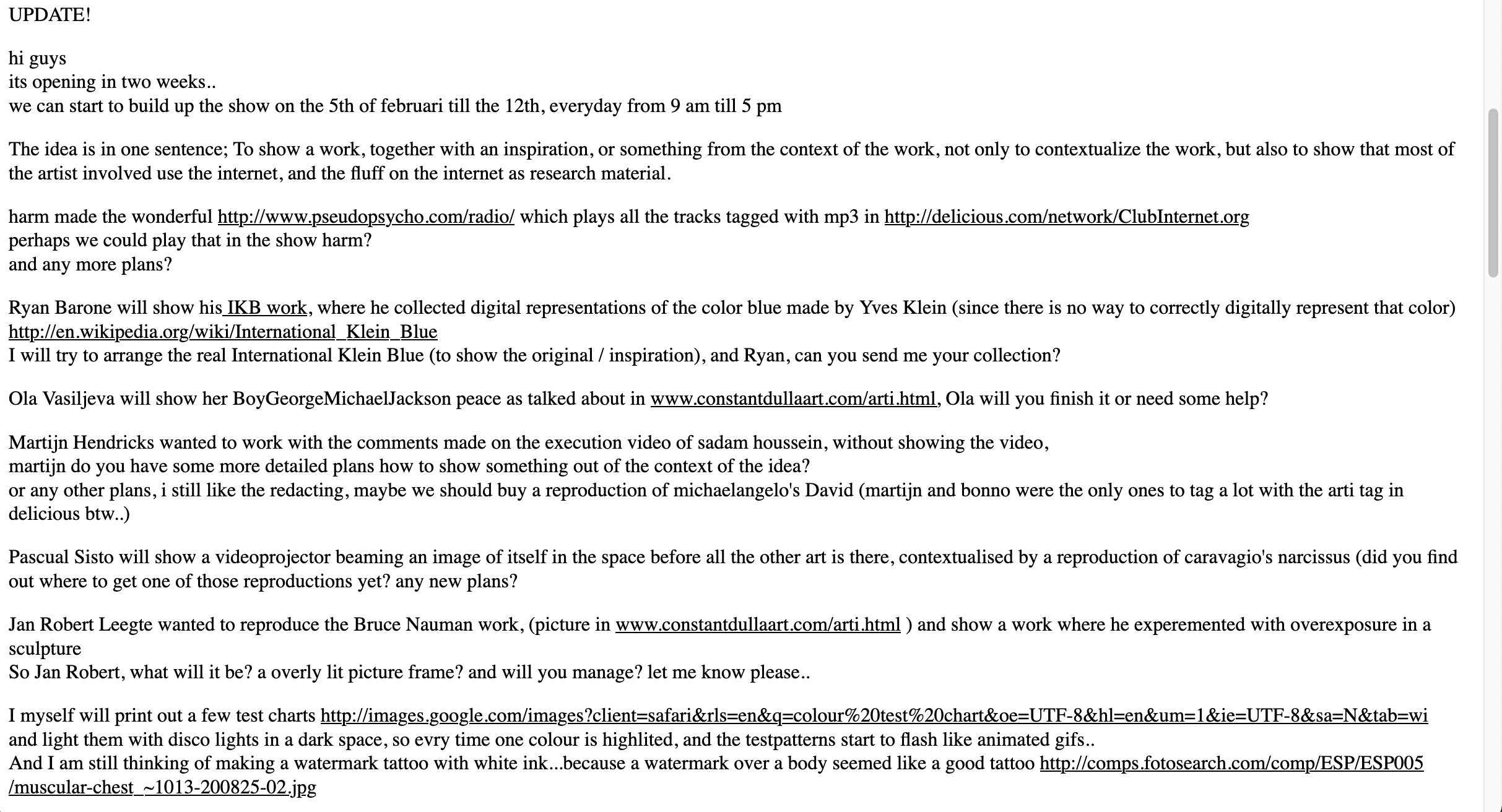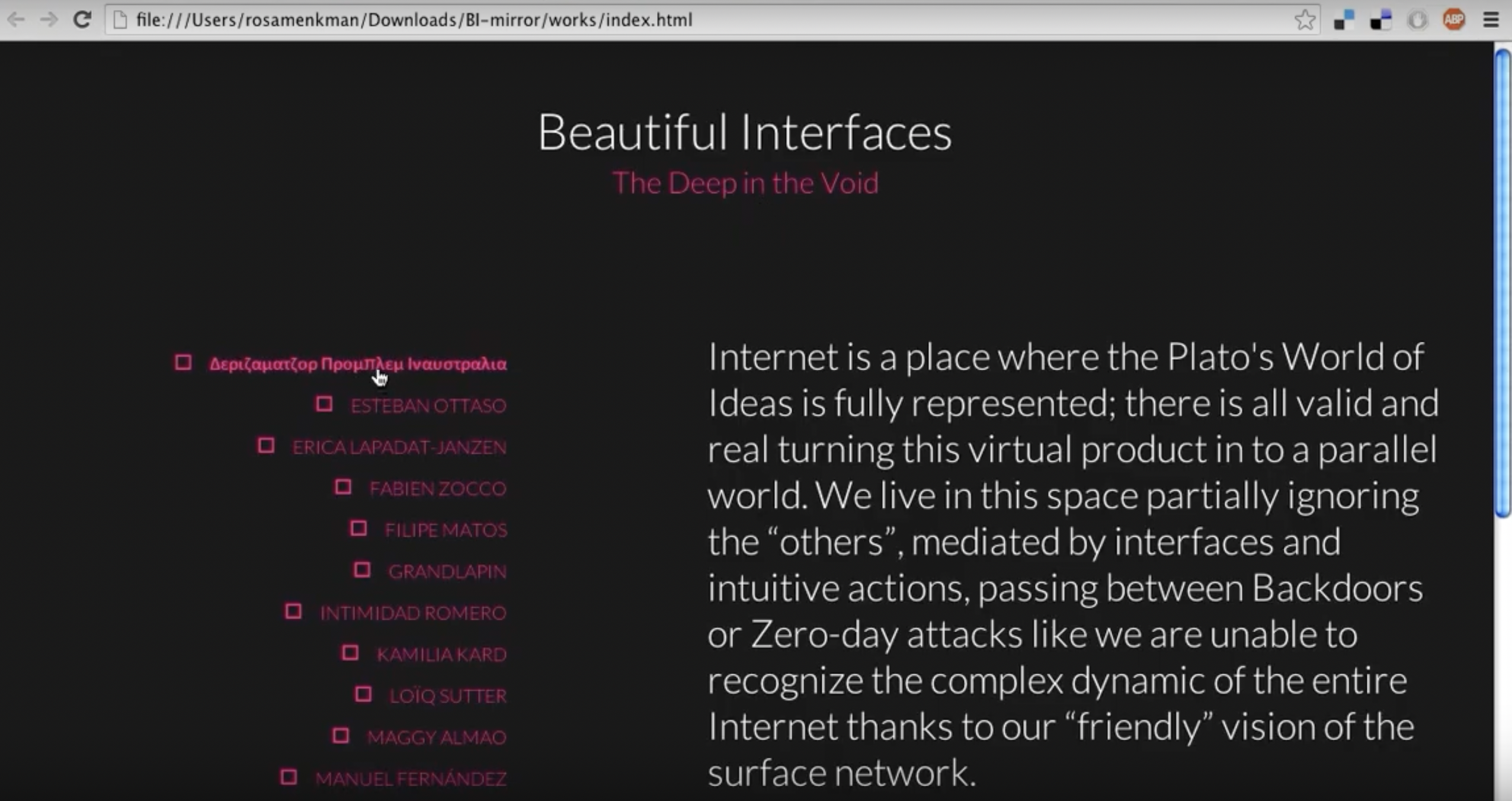Projects tagged: KEYWORD # URL
DEFINITION |
The address of a resource (such as a document or website) on the Internet that consists of a communication protocol followed by the name or address of a computer on the network and that often includes additional locating information (such as a directory and file names). — Merriam-Webster Dictionary |
GLOSSARY |
|
[:it] #1: Essenzialmente, il World Wide Web ha introdotto una nuova forma di interazione uomo-computer (HCI) portando l'ipertesto su Internet, il che ha reso ogni risorsa collegata ad esso raggiungibile attraverso un protocollo comune. Questo fu possibile con quella che Tim Berners-Lee considerò "l'innovazione più fondamentale del Web": l'URI (Universal Resource Identifier, poi rinominato Uniform Resource Locator, o URL). L'URI introdusse uno schema di identificazione che, se seguito, rendeva qualsiasi file o risorsa su Internet ugualmente facile da collegare - compresi i file accessibili attraverso altri protocolli, come Gopher, FTP o WAIS - non importa quanto il file fosse sepolto nelle sotto-directory. L'esperienza di navigare in questo spazio informatico era simile a ciò che Alan Liu chiama "trascendenza laterale": muoversi orizzontalmente su una superficie simile al web, piuttosto che scavare nelle strutture delle directory. - Megan Sapner Ankerson, Dot-Com Design. The Rise of a Usable, Social, Commercial Web, 2018 #2: Nel 1993, il browser Mosaic iniziò ad avere una funzione "hotlists", più tardi conosciuta come "bookmarks", che rendeva la navigazione sul web più personalizzata e iniziava ad essere condivisa.[:en]#1: Essentially, the World Wide Web introduced a new form of human-computer interaction (HCI) by bringing hypertext to the internet, which made every resource connected to it reachable through a common protocol. This was possible with what Tim Berners-Lee regarded as “the most fundamental innovation of the Web”: the URI (Universal Resource Identifier, later renamed Uniform Resource Locator, or URL). The URI introduced ad addressing scheme that, when followed, made any file or resource on the internet equally easy to link to—including files accessible though other protocols, such as Gopher, FTP, or WAIS—no matter how buried the file was in subdirectories. The experience of navigating though this infospace was akin to what Alan Liu calls “lateral transcendence”: moving horizontally across a web-like surface, rather than digging down through directory structures. — Megan Sapner Ankerson, Dot-Com Design. The Rise of a Usable, Social, Commercial Web, 2018 #2: In 1993, Mosaic browser started to have a “hotlists” feature—later known as “bookmarks” that made web browsing more personalised, and started to be shared.[:] |



